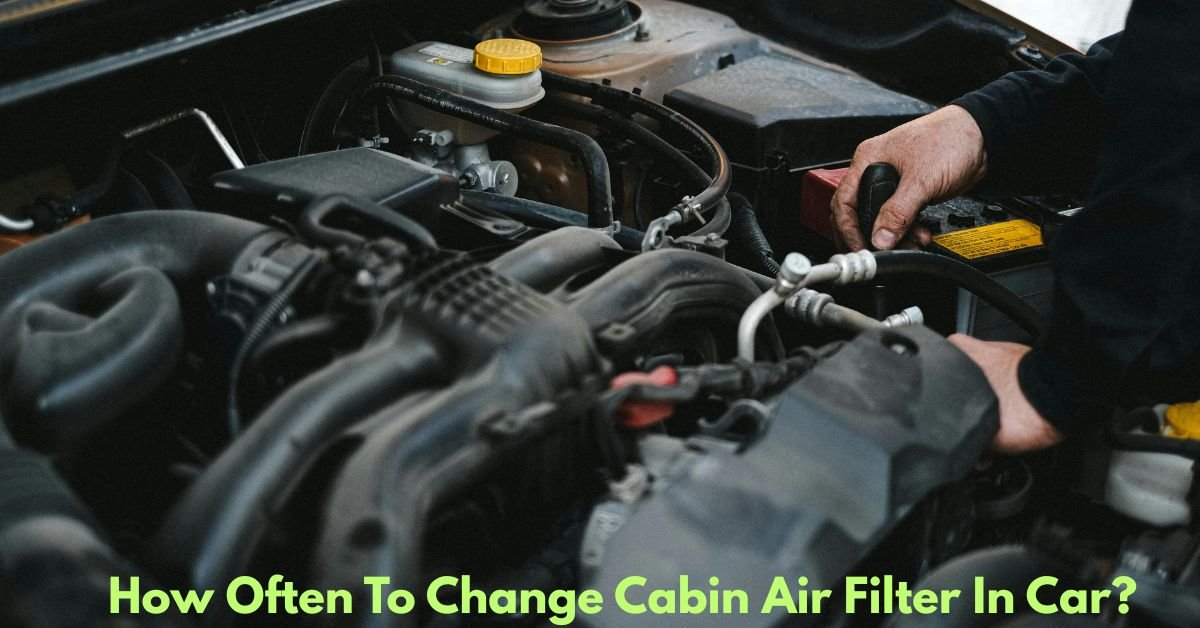The cabin air filter is an often-overlooked component of your car’s maintenance routine, but it plays a crucial role in ensuring the air you breathe inside your vehicle is clean and fresh. Much like the engine air filter, the cabin air filter prevents contaminants such as dust, pollen, mold, and other debris from entering the cabin through the air conditioning and heating system. But the question remains: how often should you change your cabin air filter? Let’s break it down.
How Often Should You Change the Cabin Air Filter in Your Car?
What Does the Cabin Air Filter Do?
Before we dive into how often you should replace it, let’s first understand the role of the cabin air filter in your vehicle. Located behind the glove box or beneath the dashboard, the cabin air filter’s primary function is to filter out harmful particles and allergens from the air that enters the cabin. This includes:
- Pollen: Especially important for individuals with allergies, as the filter traps pollen from trees, grasses, and weeds.
- Dust and Dirt: Small particles that might otherwise find their way into the car’s HVAC system.
- Mold and Bacteria: The filter helps prevent the growth of mold and bacteria, ensuring cleaner air inside your car.
- Smells and Odors: It can also help remove unpleasant odors such as exhaust fumes, smoke, or musty smells from the ventilation system.
Given the significant role it plays in the cabin’s air quality, ensuring your cabin air filter is functioning properly is essential for a comfortable driving experience.
Recommended Interval for Changing the Cabin Air Filter
So, how frequently should the cabin air filter be changed? The answer varies depending on several factors, such as your driving habits, location, and the type of filter used in your vehicle. However, a general guideline is to change the cabin air filter every 12,000 to 15,000 miles or once a year. This is a rule of thumb suggested by many car manufacturers.
It’s also worth noting that your vehicle’s owner manual may provide specific recommendations for your car model. Some modern vehicles have a built-in maintenance reminder system that will alert you when it’s time to change the cabin air filter.
Must Read: How Do You Get Urine Smell Out Of Car Seats?

Factors That Can Affect the Frequency of Replacement
While the 12,000 to 15,000-mile range is standard, there are certain conditions under which you may need to replace the cabin air filter more frequently:
- Driving in Polluted Areas: If you live in a heavily polluted area or frequently drive through industrial zones or construction sites, the air around you may have more dust, dirt, and other particles. In such conditions, the cabin air filter may clog up faster, requiring more frequent changes.
- Driving in Rural or Pollen-Rich Areas: If you live in an area with a lot of trees, or if you have a lot of allergies, you may need to replace your filter more often during the spring and fall when pollen levels are higher.
- Frequent Short Trips: If you do a lot of short trips, the HVAC system might not be working hard enough to circulate air through the cabin, which can allow contaminants to build up in the filter. This could lead to the filter becoming clogged more quickly.
- High Humidity or Damp Conditions: In areas with high humidity or frequent rain, moisture can build up in the air system, promoting the growth of mold or mildew in the filter. This could require more frequent changes to ensure a clean, fresh air supply.
- Smelly or Poor Air Quality: If you notice a musty odor or if the air quality inside your vehicle has worsened, it’s a sign that the cabin air filter might need to be replaced sooner. It’s a good idea to check the filter if you experience these symptoms.
Signs That You Need to Replace the Cabin Air Filter
Even if you’re not sure whether it’s time for a replacement, there are several indicators that the cabin air filter is no longer functioning optimally:
- Reduced Airflow: If you notice that the air coming out of your vents seems weaker than usual, it could be a sign that your filter is clogged and needs replacing.
- Strange Odors: Musty, moldy, or stale smells coming from the vents can indicate that your filter is contaminated and should be replaced.
- Increased Allergies or Respiratory Issues: If you or your passengers notice an increase in sneezing, coughing, or other allergy symptoms while driving, your cabin air filter could be to blame.
- Visible Debris: If you remove the cabin air filter and see visible debris or dirt buildup, it’s time for a new one.
How to Replace the Cabin Air Filter
Replacing a cabin air filter is a relatively simple process that you can often do yourself, depending on the vehicle. The filter is typically located behind the glove box or beneath the dashboard, and it can usually be accessed by removing a panel or cover. For information on where to find and replace the cabin air filter, consult your vehicle’s handbook. However, if you’re unsure or uncomfortable with performing the replacement, it’s always best to have a professional mechanic take care of it.

Conclusion
In conclusion, changing your cabin air filter at regular intervals is crucial for maintaining good air quality inside your vehicle. While the typical recommendation is to replace it every 12,000 to 15,000 miles, you may need to adjust this based on your driving environment. Keep an eye out for signs that the filter may need replacing, and remember that a clean cabin air filter not only helps with air quality but also contributes to the overall health of your car’s HVAC system. Stay proactive with this simple maintenance task, and enjoy a more comfortable and healthier driving experience.
